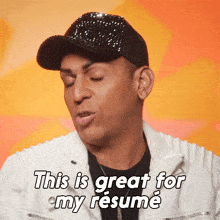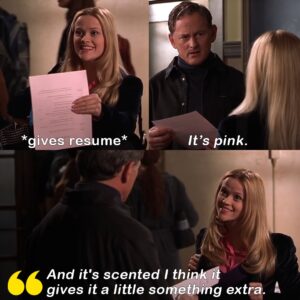By: Anna Wierda
In the realm of job hunting, your resume is often your first impression to potential employers. A well-crafted resume can open doors to new opportunities, while a poorly constructed one might harm your chances. Don’t jeopardize your chances, ensure your resume makes a positive impact with these tips.

Personal information & file naming
Make it easy for people to easily identify and contact you! Ensure your name is prominently displayed along with clear contact information at the top of the page, including your phone number, email, city, state, and LinkedIn profile. If applicable, indicate your openness to relocation. When saving your resume, use your first and last name as the file name for easy identification, such as “John_Smith_Resume.pdf.”
Executive summary
Craft a compelling executive summary. In a few lines, highlight your key skills, experiences, and what sets you apart. This section serves as your elevator pitch, capturing the reader’s attention right from the beginning.
Work experience
List your experiences in reverse chronological order. Go beyond job descriptions; leverage metrics to quantify your achievements. Showcase concrete evidence of your impact by emphasizing results and actions taken in previous roles.
Skills and systems
Always include a section highlighting your skills and proficiency in various systems. Tailor these to align with the specific job you’re applying for, enhancing your application’s relevance.
Education & academic achievements
Place your education section near the top if you’re early in your career. For seasoned professionals, shift it towards the bottom. Emphasize experience over education as you progress in your career. If your GPA is impressive, consider including it.
Optional sections
Consider adding an optional section beneath the key skills section to highlight additional achievements and commitments. This can include awards, certifications, achievements, professional memberships, and volunteer work, providing an overview of your dedication to personal and professional development.
Proofread
Typos and grammatical errors can be deal-breakers. Use tools like Grammarly or phone a friend to proofread thoroughly. Attention to detail matters and reflects on your commitment to excellence. Keep your content concise and to the point.
Design simplicity: Ensure readability
Always opt for a professional, black font for enhanced readability and maintain a classic color scheme for a polished and professional appearance. Set appropriate margins for a clean, organized, and visually appealing document.

Addressing career gaps: Be transparent
If there are gaps or short stays in your career, be open to explaining the reasons for them. You can share more details in a cover letter or by including a short note in parentheses next to the date of each relevant experience, providing context such as (relocated), (contract end), (left due to family care), or (layoff due to budget cuts). This helps ensure clarity and transparency, preventing any assumptions by the reader.
Conclusion
Think of your resume as your own personal advertisement. Remember, you get one shot to leave an impression. Next time you’re about to submit your resume to a job posting, consider these quick tips to effectively reflect your work journey!


